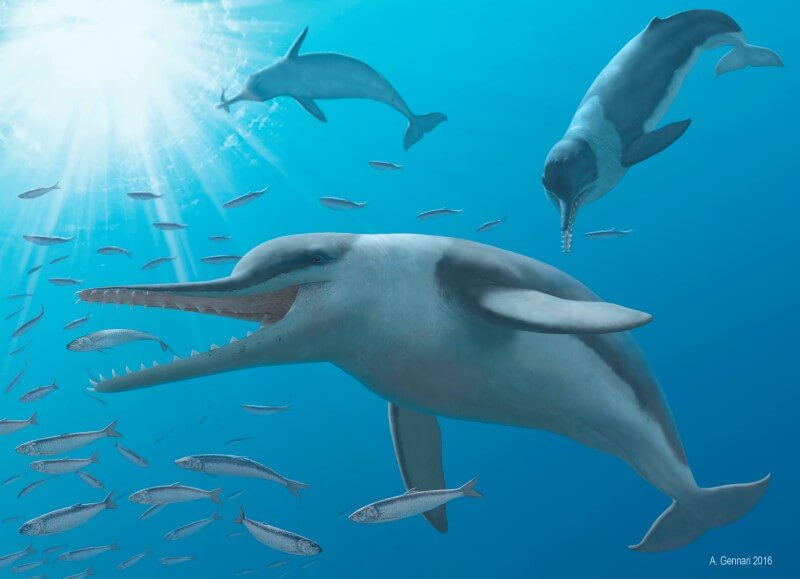By Will Dunham
WASHINGTON (Reuters) – Fossils unearthed in a SouthCarolina drainage ditch are providing insight into the development of ultrasonic hearing in prehistoric whales, a trait closely linked to their uncanny ability to hunt and navigate using sound waves and echoes. Scientists on Thursday described fossils of a newly identified dolphin, called Echovenator sandersi, that thrived in shallow, warm seas about 27 million years ago, with one of the
best preserved ears of any ancient cetacean.
CT scans of the ear and comparisons with other whale species showed Echovenator’s ear possessed many features found today in whales that can hear ultrasonicfrequencies, above the range of
human hearing.
“Echovenator already shows skull features associated with echolocation, although it perhaps couldn’t have processed signals from echolocation as well as modern dolphins,” said New York Institute of Technology paleontologist Morgan Churchill, lead author of the research published in the journal Current Biology. Echolocation, or biological sonar, is used by all the world’s toothed whales such as dolphins, sperm whales and orcas. These marine mammals emit high-frequency sound waves that bounce off objects underwater and return in the form of an echo, enabling them to determine an object’s location.
Whales evolved from wolf-like land ancestors more than 50 million years ago, only later splitting into the two groups seen today: toothed whales and baleen whales, which feed by straining
small marine organisms out of the seawater. Baleen whales do not use echolocation, which was probably in place by 34 million years ago, Churchill said.
Echolocation was an important adaptation for whales, which previously relied upon sight to find prey. Using echolocation, whales could successfully hunt down fish and squid in sediment-congested coastal waters, as well as feed at night or at great depths. “Echolocation is probably one of the most remarkable and unique adaptations within mammals. Out of 6,000 mammal species alive today, only bats and toothed whales, along with a very
small number of small insectivores, use echolocation as a major way of navigating their environment,” Churchill said.
Echovenator, meaning “echo hunter,” measured about 6 feet long (2 meters). Its well-preserved skull, with lower jaws, and several neck vertebrae were found in South Carolina’s Berkeley County.
New York Institute of Technology anatomist and paleontologistJonathan Geisler, co-author of the study, said Echovenator was a coastalspecies swimming in muddy waters and bays. Its front teeth, onthe end of a long, narrow snout, appear well adapted forsnagging fish, Geisler said. (Reporting by Will Dunham; Editing by Sandra Maler)
Hear! Hear! Exquisite fossils preserve ear of prehistoric whale

By Will Dunham

















